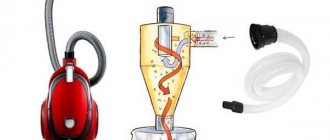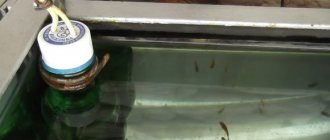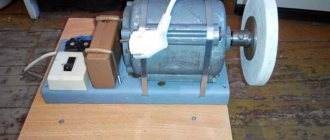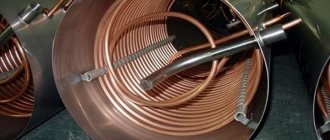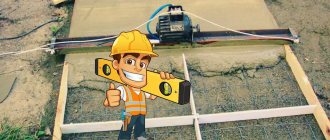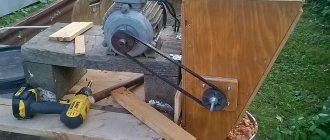Capabilities of a homemade device
Naturally, it will be quite difficult to assemble a professional or multifunctional dosimeter. Household portable or individual devices register beta or gamma radiation. The radiometer is designed to study specific objects and read the level of radionuclides. In fact, a dosimeter and a radiometer are two different devices, but household versions often combine both the first and the second. Subtle terminology plays a role only for specialists, which is why even combined models are called generically – dosimeter.
By choosing one of the proposed circuits for assembly, the user will receive a simple device with low sensitivity. There is still a benefit in such a device: it is capable of recording critical doses of radiation, this will indicate a real threat to human health. Despite the fact that a homemade device is several times inferior to any household dosimeter from a store, it can be used to protect your own life.
Model with membrane capacitor
Membrane-type devices are quite common today. Compared to camping capacitors, they are characterized by reduced sensitivity. In this case, the negative resistance in the circuit is usually no more than 3 ohms. All this suggests that the accuracy of determining the radiation power of such devices is quite high. It should also be taken into account that the detectors in this case are only suitable for the two-wire type. In general, the models are compact, but their characteristics are quite different. Expanders for such capacitors are suitable of the electrostatic type. In turn, rectifiers are used both analog and resonant.
However, to increase the accuracy of the readings, many experts advise choosing the second option. Triggers for these dosimeters are suitable for medium power. It should also be taken into account that zener diodes are used in devices quite rarely. In this case, dampers to increase sensitivity must be installed with two resistors.
Useful tips
Before choosing one of the assembly schemes for yourself, read the general recommendations for manufacturing the device.
- For a self-assembled device, choose 400 volt meters; if the converter is designed for 500 volts, then you need to adjust the feedback circuit setting. It is permissible to choose a different configuration of zener diodes and neon lamps, depending on what dosimeter circuit is used during manufacture.
- The output voltage of the stabilizer is measured with a voltmeter with an input resistance of 10 MΩ. It is important to check that it is actually equal to 400 volts; charged capacitors are potentially dangerous to humans, despite their low power.
- Near the counter, several small holes are made in the housing for the penetration of beta radiation. Access to high voltage circuits must be excluded; this must be taken into account when installing the device in the housing.
- The circuit of the measuring unit is selected based on the input voltage of the converter. The connection of the unit is carried out strictly with the power turned off and the storage capacitor discharged.
- With a natural radiation background, a homemade dosimeter will produce about 30 - 35 signals in 60 seconds. Exceeding the indicator indicates high ion radiation.
List of parts needed for the radio circuit
- 1 BPW34 photodiode
- 1 LM358 op amp
- 1 transistor 2N3904
- 1 transistor 2N7000
- 2 capacitors 100 NF
- 1 capacitor 100 µF
- 1 capacitor 10 nF
- 1 capacitor 20 nF
- 1 10 MΩ resistor
- 2 1.5 Mohm resistor
- 1 56 kohm resistor
- 1 150 kohm resistor
- 2 1 kohm resistor
- 1 250 kohm potentiometer
- 1 Piezo speaker
- 1 Power switch
As you can see from the diagram, it is so simple that it can be assembled in a couple of hours. After assembly, make sure the polarity of the speaker and LED are correct. Place copper tubes and electrical tape on the photodiode. It should fit snugly. Drill a hole in the side wall of the aluminum case for the toggle switch, and on top for the photosensor, LED and sensitivity control.
It will be interesting➡ Connecting a fiber optic cable at home
Interesting read: How to make a motion sensor with your own hands.
There should be no more holes in the case, since the circuit is very sensitive to electromagnetic interference. Once all electrical components are connected, insert the batteries. We used three CR1620 batteries stacked together. Wrap electrical tape around the tubes to prevent them from moving.
This will also help block light from reaching the photodiode. Now everything is ready to begin detecting radioactive particles. You can check it in action on any test radiation source, which you can find in special laboratories or in school classrooms for practical work.
Scheme No. 1 - elementary
To design a detector for detecting beta and gamma radiation “quickly and easily”, this option is perfect. What you will need before construction:
- a plastic bottle, or rather a neck with a lid;
- tin can without a lid with processed edges;
- regular tester;
- a piece of steel and copper wire;
- transistor kp302a or any kp303.
To assemble, you need to cut off the neck of the bottle so that it fits tightly into the tin can. A narrow, tall can, like condensed milk, is best. Two holes are made in the plastic cover, where you need to insert a steel wire. One of its edges is bent into a loop in the shape of the letter “C” so that it holds securely on the lid; the second end of the steel rod should not touch the can. Afterwards the lid is screwed on.
The KP302a gate leg is screwed to a loop of steel wire, and the tester terminals are connected to the drain and source. You need to wrap a copper wire around the can and secure one end to the black terminal. The capricious and short-lived field-effect transistor can be replaced, for example, by connecting several others using a Darlington circuit, the main thing is that the total gain must be equal to 9000.
The homemade dosimeter is ready, but it needs to be calibrated. To do this, a laboratory radiation source is used; as a rule, the unit of its ion radiation is indicated on it.
Alpha, beta, gamma and counter design
Alpha radiation is blocked by paper. Beta radiation can be shielded with a sheet of plexiglass. And from hard gamma radiation you need to build a wall of lead bricks. Perhaps everyone knows this. And all this has a direct bearing on Geiger counters: in order for it to feel radiation, it must at least penetrate inside. And it should not fly right through, like a neutrino through the Earth.
Alpha beta gamma radiation/
The SBM-20 type meter (and its older brother SBM-19 and the younger SBM-10 and SBM-21) have a metal case, in which there are no special entrance windows. It follows from this that there is no talk of any sensitivity to alpha radiation. He feels beta rays quite well, but only if they are hard enough to penetrate inside. This is somewhere from 300 keV. But he feels gamma radiation starting from a couple of tens of keV.
And the SBT-10 and SI-8B meters (as well as the newfangled and inaccessible Beta-1,2 and 5 due to the scrap prices) instead of a solid steel shell have an extensive window made of thin mica. Beta particles with energies in excess of 100-150 keV can penetrate through this window, allowing carbon-14 contamination to be seen, which is completely invisible to steel meters. The mica window also allows the counter to sense alpha particles.
True, with regard to the latter, you need to look at the thickness of the mica of specific counters. So, SBT-10 with its thick mica practically does not see it, but Beta-1 and 2 have thinner mica, which gives the detection efficiency of plutonium-239 alpha particles about 20%. SI-8B is somewhere in the middle between them.
And now as for the passage through. The fact is that alpha and beta particles in a Geiger counter register almost everything that was able to penetrate inside. But with gamma quanta everything is sad. In order for a gamma quantum to cause a pulse in the counter, it must knock out an electron from its wall. This electron must overcome the thickness of the metal from the point where the interaction occurred to the inner surface, and therefore the “working volume” of the detector, where its interaction with gamma radiation photons occurs, is a thin, several microns, layer of metal. From this it is clear that the efficiency of the counter for gamma radiation is very low - a hundred or more times less than for beta radiation.
Additional material: How to test a magnetron using a regular multimeter.
Scheme No. 2 - installation of the meter
In order to assemble a dosimeter with your own hands, a regular SBM-20 meter will do - you will have to buy it at a specialized radio parts store. An anode, a thin wire, passes along the axis through the sealed cathode tube. The internal space is filled with gas at low pressure, which creates an optimal environment for electrical breakdown.
The voltage of SBM-20 is about 300 - 500 V, it must be adjusted so as to prevent arbitrary breakdown. When a radioactive particle hits, it ionizes the gas in the tube, creating a large number of ions and electrons between the cathode and anode. Similarly, the counter is triggered for each particle.
It is important to know! For a homemade device, any meter designed for 400 volts is suitable, but the SBM-20 is the most suitable; you can purchase the popular STS-5, but it is less durable.
The dosimeter circuit consists of two blocks: an indicator and a network rectifier, which are assembled in plastic boxes and connected with a connector. The power supply is connected to the network for a short period of time. The capacitor is charged to a voltage of 600 W and is the power source for the device.
The unit is disconnected from the network and from the indicator, and high-impedance telephones are connected to the connector contacts. A capacitor should be of good quality; this will extend the operating time of the dosimeter. A homemade device can function for 20 minutes or more.
Technical features:
- the rectifier resistor should be optimally selected with a power dissipation of up to 2 W;
- capacitors can be ceramic or paper, with the appropriate voltage;
- You can choose any counter;
- eliminate the possibility of touching the resistor contacts with your hands
Natural background radiation will be registered as rare signals in phones; the absence of sounds means that there is no power.
How to assemble a radiation dosimeter with your own hands
There are a large number of schemes for assembling a portable device for measuring background radiation. For beginners to understand the basics of radio engineering, the simplest devices using SBM-20 resistors are suitable. More experienced hobbyists can construct their own radiation dosimeter with a two- or three-wire detector, and also using vector or integral resistors.
Regardless of the choice of circuit diagram for the future device, you should use a few simple rules when assembling it. They will allow you to get the highest quality device that will be safe for human life and health. Most experts advise:
- Using 400 volt meters. If the module is designed for 500 volts, you will have to make additional adjustments to the circuit settings.
- Before using the device, you must measure its output power using a 10 MΩ voltmeter. It should be exactly 400 volts. It is worth remembering that despite their low power density, if configured incorrectly, capacitors can pose a health hazard.
- It is necessary to exclude the possibility of access to elements that are supplied with high voltage. The housing must tightly cover electrical devices.
- All nodes are connected with the power turned off and the capacitors discharged.
Despite the choice of the design of the future device, the general operating principle of the radiation dosimeter will be almost the same. It will produce a number of beeps. With a normal radiation background, this indicator will be at the level of 30. An increased number of signals indicates a significant increase in the level of environmental pollution.
Scheme of a simple dosimeter with your own hands in 3 minutes
This method allows you to obtain a homemade device for measuring radiation in the shortest possible time. The technology requires a minimum set of skills and the simplest equipment.
To make such a device you will need:
- plastic bottle;
- tin;
- simple tester;
- 20 cm of copper or steel wire;
- transistor kp303.
Remove the top of the tin can and lightly polish the edges with sandpaper so as not to injure your hands. The bottle is cut off at the neck, leaving about 10-15 cm - it should fit tightly into the jar. 2 holes are made in the lid - a wire is inserted into one of them so that it extends 1-2 cm. After this, the second end is bent and inserted into the second hole.
Important! The end of the wire should under no circumstances touch the bottom of the tin can.
The tester acts as a measuring device.
The leg of the transistor is screwed to the resulting loop. The tester terminals are connected to its source and drain. After this, you can begin direct calibration of the dosimeter. Laboratory radiation sources are used as a standard.
Do-it-yourself dosimeter diagram on SBM-20
More advanced models can be assembled using special counters. SBM-20 consists of a sealed tube - a cathode, through which an anode in the form of a wire passes. Inside, the cavity is filled with gas - this ensures optimal electrical conductivity.
Also, for a do-it-yourself radiation dosimeter you will need:
- 400 volt meter STS-5;
- resistor up to 2 W;
- ceramic or paper capacitors.
The dosimeter consists of two plastic blocks - a network rectifier and an indicator. They are connected to each other by a connector. The network rectifier is assembled according to the diagram. Before switching on, it is necessary to charge the capacitors - to do this, the device is plugged into the network for a short period of time.
Important! The assembled device must have a closed block with resistors. It is unacceptable to touch their contacts with bare hands.
Each of the blocks must be hermetically sealed in a plastic case.
After charging, phones with high resistance values are connected to the dosimeter. At natural radiation levels, the device will register rare telephone signals. Pollution of the surrounding area will cause more frequent signals. If the dosimeter is completely silent, most likely the capacitors have run out of charge. A fully charged device can operate for about 20 minutes.
DIY dosimeter with two-wire detector
Such a device is ideal for detecting significant changes in radiation. The manufacturing process of such a dosimeter will not cause difficulties for experienced radio amateurs.
To collect it yourself you need:
- pass capacitor;
- two-wire detector;
- 3 resistors;
- single-channel damper element;
- Plastic container.
A two-wire detector will provide better sensitivity to radiation differences.
Expanders are not used for the design, preferring resonant rectifiers. The damper is placed directly after the detector to reduce the amplitude of vibrations. A pass-through capacitor is installed behind it - it is this that determines the initial dose of radiation. A dosimeter made with your own hands using this technology will be more sensitive to radiation fluctuations, but will require more time to assemble.
DIY dosimeter with three-wire detector
More complex devices are classified as professional measuring instruments. They show not only the radiation level, but also the current radiation power. The task of assembling such a dosimeter can be difficult even for experienced radio amateurs.
Important! The detector is installed only after all feed-through capacitors have been secured.
For assembly, closed-type electrolytic resistors and single-channel dampers are used. When choosing expanders, preference is given to low-frequency options. Radiation measurements are performed only with resonant rectifiers.
A radiation dosimeter on a three-channel detector also allows you to measure radiation power
The power of a dosimeter assembled by yourself depends on the output resistor used. A separate point when assembling such a device is worth noting the rather frequent refusal to use zener diodes - they cause high errors in measurements.
How to make your own dosimeter with vector resistors
Vector elements are a complement to more traditional network detector devices. The main repulsive factor in the manufacture of such radiation dosimeters is the final price of the main spare part - its purchase can result in a rather impressive amount.
Vector resistors are more expensive compared to other analogues
As in the case of detector dosimeters, vector resistors are installed only after all feed-through capacitors have been secured. The number of the latter can vary from one to two per model, depending on the desired power. For normal operation, capacitors with a volume of about 20 pF are required.
Important! With a large number of pass-through capacitors, the resistance can increase significantly, and, as a result, the resulting errors.
After installing the vector resistors in the radiation dosimeter, you can proceed to installing the rectifier. It is best to use resonant type models. In addition, experts talk about the possibility of using position rectifiers. Once the device is completely assembled, it is placed in a plastic case and calibrated in the laboratory.
Homemade dosimeter with integral resistors
The device manufactured using this technology is characterized by high sensitivity. The do-it-yourself radiation dosimeter circuit on a microcontroller is not difficult for experienced radio amateurs. There are both single-channel and multi-channel models.
The first step to making a radiation dosimeter with your own hands is to select a housing. A regular plastic box of appropriate size will do. A damper is installed in it. Further assembly coincides with the manufacturing technology of a device with vector resistors.
A feature of integral resistors is high measurement accuracy
An important feature is the installation of capacitors after resistors. On average, you will need about 3 elements. The sensitivity of capacitors directly depends on the expander used. Afterwards, a special binary type counter is selected. They are installed directly on the detector itself.
Scheme No. 3 with a two-wire detector
You can construct a homemade dosimeter with a two-wire detector; for this you need a plastic capacitor, a pass capacitor, three resistors and a single-channel damper.
The damper itself reduces the amplitude of oscillations and is installed behind the detector, directly next to the feed-through capacitor, which measures the dose. For this design, only resonant rectifiers are suitable, but expanders are practically not used. The device will be more sensitive to radiation, but will require more time to assemble.
There are other schemes on how to make a dosimeter yourself. Radio amateurs have developed and tested many variations, but most are based on the circuits described above.
Types of Geiger counters
By design, Geiger counters come in two types: flat and classic.
Table - Basic parameters of some Geiger counters.
Classical
Made from thin corrugated metal. Due to corrugation, the tube acquires rigidity and resistance to external influences, which prevents its deformation. The ends of the tube are equipped with glass or plastic insulators, which contain caps for output to the devices. Varnish is applied to the surface of the tube (except for the leads). The classic counter is considered a universal measuring detector for all known types of radiation. Especially for γ and β.
Material on the topic: Why do you need a frequency converter.
Flat
Sensitive meters for recording soft beta radiation have a different design. Due to the small number of beta particles, their body has a flat shape. There is a mica window that weakly blocks β. BETA-2 sensor is the name of one of these devices. The properties of other flat counters depend on the material.
How to make a Kharchenko antenna for T2 with your own hands.
Read more
Design and circuit of a three-phase transformer.
Read more
What is the difference between a starting capacitor and a working capacitor?
Read more
